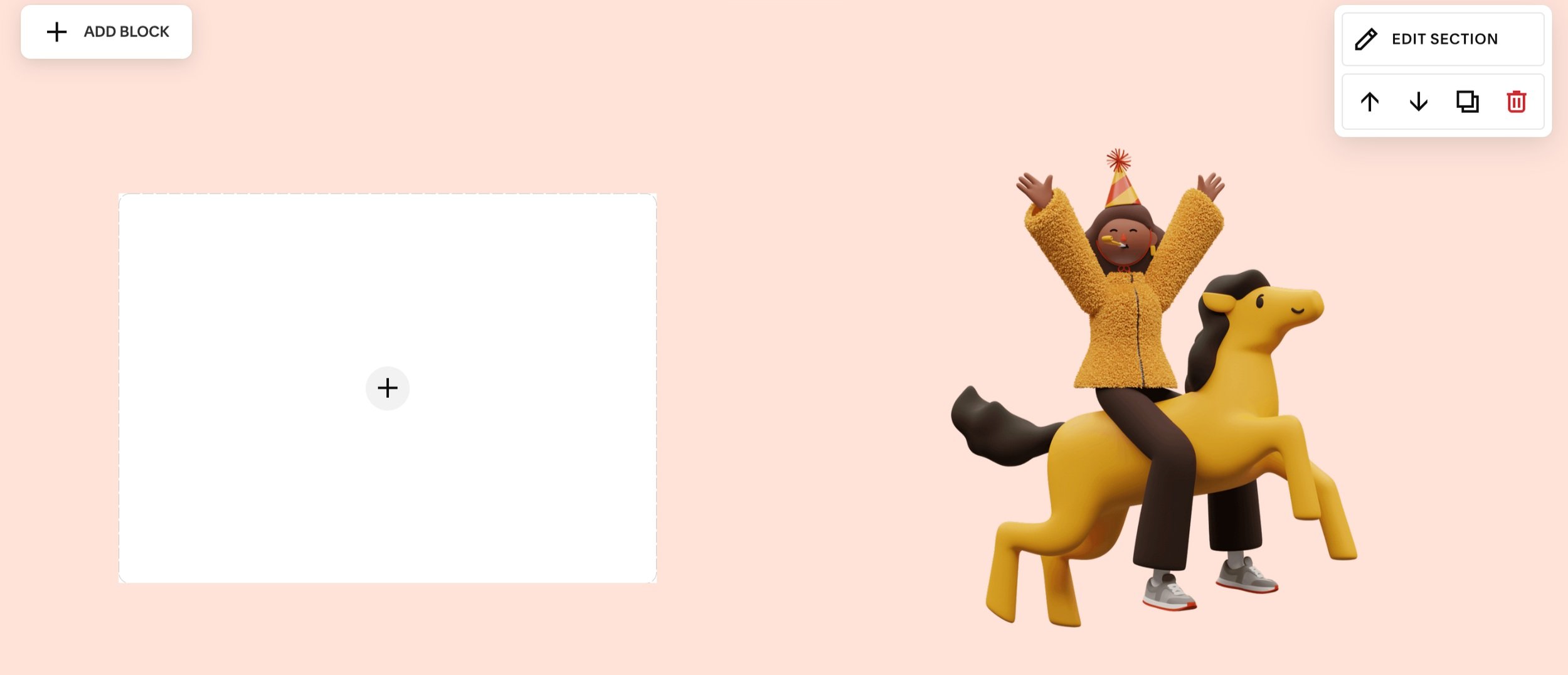No code and the future of web design
What is no code?
No code is a transformative approach that's going to change how we think about web design.
With no code, you can create websites without writing code. No Code offers an alternative approach for building websites that allows teams to focus on user experience rather than technical aspects of their projects from start to finish—from ideation through testing—in order to build better products faster than ever before possible with traditional web development processes alone.
You may have heard of no code platforms, or WYSIWYG builders such as Squarespace, Caard, Shopify and Webflow. If you're not quite sure what they are, here's the gist: these tools allow you to build websites visually, without writing any code at all.
No code is growing rapidly. Chances are you are interacting with no code websites and tools daily.
But there's more than just ease of use going on here; no code platforms offer a lot of features that will help you create anything from simple static sites to advanced e-commerce solutions.
In many ways, no code can be compared to building with lego blocks or even constructing a house. Consider building a house today compared to a few hundred years ago. Back then, you’d likely need to fell a tree, where as today you can use pre cut lumber from a building centre and move much more quickly, freeing up time to be more productive, focus on other design elements and push the boundaries of building.
What no code is not
It should be noted that no code doesn’t literally mean no code. No code simply provides the tools for designers to build visually rather than writing code. However, websites are still built on code. So, when you are using a no code tool and dragging a metaphorical lego block into a frame, you are actually dragging a piece of code. Pretty magical, right? ✨
“The code is still there–it’s just prearranged into bite-sized visual elements that creators can use to start designing right away means you still get the functionality of HTML5, JavaScript and CSS, but the building process is simpler and more efficient”
Example of HTML
No code is a key enabler of digital transformation
Years ago, websites could take several months to build and relied heavily on the expertise of a web developer from the initial build to small updates. Today, organizations can build websites in record time, iterate to meet business goals, collaborate more efficiently and use their website as a true marketing tool.
As an article from Webflow put so well:
“It democratizes technology, makes website creation accessible to a broader audience, speeds up innovation, and as a result, pushes the industry forward.”
- Webflow
Digital transformation is about creating a digital business and customer experience that is more efficient, personalized, and engaging. It’s about using technology to transform your customer relationships so you can grow your business faster than ever before.
In fact, according to an article from userguiding.com:
“84% of enterprises have turned toward low-code/no-code for their ability to reduce strain on IT resources, increase speed-to-market, and involve the business in digital asset development.”
-userguiding.com
As web design tools evolve, sales, marketing, and design are becoming less siloed, and websites are becoming marketing powerhouses. Marketing teams can build landing pages, improve discoverability in search engines with blog content, and update messaging without relying on a developer. This has massive benefits from a competitive and cost saving stand point. Businesses can test product market fit, iterate in real time, and adapt to meet the needs of their audience. This ability to pivot, grow, and evolve is what makes no code so special.
As joyform.io points out, “approximately 92% of U.S. businesses are micro-businesses, and they account for 64% of all new jobs in the U.S.”
For small growing teams to succeed, they need to be nimble, efficient and cost effective, often wearing several hats at once. No code tools are a game changer for these businesses as they allow for just that.
In short, no-code digital transformation can help organizations improve operational efficiency. This is a key aspect of business that impacts employee satisfaction, customer retention and loyalty, and ultimately the bottom line.
Good web design goes beyond good tools
Today, if you have a vision, you can make a website. That is pretty remarkable, in my opinion. However, it must be stated that access to no code tools, alone, does not make a good website. Just as access to pre cut lumber doesn’t make a sound house.
Good web design goes far beyond access to the newest tools (though those tools certainly help). Rather good web design is about people.
So then, what is good web design?
Good web design is empathetic
Good web design and smart marketing is about making the extra effort, care and consideration to understand your audience, and thoughtfully offer a solution to their problem or query. Yes, there are a lot of tactics and best practices for growing your business, but at the heart of it, people want a considerate, trustworthy and authentic experience.
Good web design is inclusive:
When thinking about designing with empathy, it is crucial to have diversity and inclusion as a central focus. In 2022 there are really no excuses for failing when it comes to inclusive web design. From images and illustrations to web copy, there are a number of great resources to deliver a website that mirrors a diverse audience.
Good web design is goal focused:
Every element of your website, including paragraphs, headings, and buttons (calls to action), should be thought about carefully. Before setting out to build or redesign a website, you’ll want to consider the following:
2) How will people find my website?
3) What action do I want people to take on the website? Good web design finds the intersection between business goals and user needs
For a complete guide on creating a conversion focused website, visit this guide
Are no code tools only for web design?
No-code tools go beyond website applications, and include tools to build apps and other digital experiences without writing code. From marketing to app development and collaboration, no code tools are helping business of all sizes everyday. Here’s a look at some popular tools across worth exploring.
App Design:
For example, bubble.io is a tool that allows you to create and publish an app without code. Bubble offers a powerful point-and-click web editor and cloud hosting platform that allows users to build fully customizable web applications and workflows, ranging from simple prototypes to complex marketplaces, SaaS products, and more. Bubble has become wildly popular as of late - Over 500,000 users are currently building and launching businesses on Bubble.
Workspace & Collaboration:
Notion is a powerful tool for planning, brainstorming, and organizing your projects. You can use Notion to take notes, create to-dos, keep databases, build a wiki and brainstorm. It even has integrations with Slack so you can share ideas in real time with your team.
Or you can use it as a personal workspace - create multiple notebooks that stay separate from each other (like one for work and one for home). Notion also comes complete with ready made templates to save you time.
Newsletters:
Mailchimp is one of the most popular email marketing platforms. It's easy to use, has great templates and analytics, and integrates with other services like Google Analytics. If you're looking for an easy way to send out newsletters or other mass emails. Gone are the days of having to hand code your newsletter templates. The MailChimp editor is easy to use and allows you to add images and text with a few clicks of the mouse, and customize your template with pre-designed elements or create your own layout in the drag-and-drop editor.
Forms & Surveys:
Typeform is a great way to create some very professional looking forms and surveys. It's free to use for up to 100 responses per month, and it has a great mobile app. Typeform has a lot of features:
Dynamic dropdown menus
Conditional logic
The ability to add text fields, checkboxes, date pickers, audio recordings and more.
Design:
Canva is a design tool that allows you to create stunning visuals for social media, presentations and more. It has over 1 million users and is rated 4.7/5 stars on Google Play.
You can create beautiful designs with minimal effort using Canva's drag-and-drop editor. Select from hundreds of templates or upload your own image for a custom look.
Visit nocode.tech to get a deeper dive into hundreds of no code tools.
No code is the future of design and business
The rise of the no-code movement is a sign that we’re entering an era when web design is less about coding, and more about making things. That is a really exciting idea. From empowering the soloprenuer to giving large businesses the ability to collaborate and move faster, no code is putting the power in our hands. In the world of web design, trends come and go, but one thing is sure - the future is no code.






